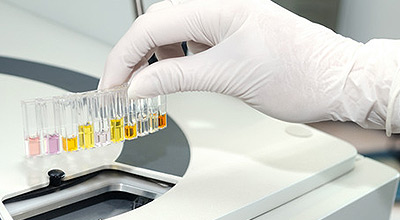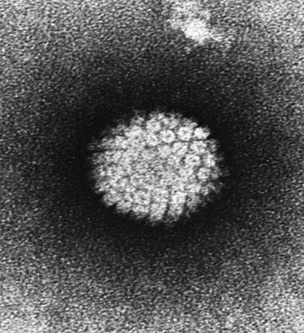Human Papilloma Virus (HPV)All the information contained on this informational resource is intended exclusively for practitioners and cannot be used by the site visitors for self-diagnosing and prescribing treatment without a previous consultation with the doctor.
In October 2008, the Nobel Committee awarded the Prize for Medicine to the scientist, whose discovery played a huge role in the fight against human viruses, annually taking hundreds of thousands and millions of lives. The award "for his discovery of human papilloma viruses causing cervical cancer”, was given to Harald zur Hausen from the German Cancer Research Centre in Heidelberg. In the mid-seventies, Harald zur Hausen discovered that women suffering from cervical cancer are infected with HPV (human papilloma virus) in 100% of cases. At that time, many experts believed that cervical cancer is caused by the herpes simplex virus, but zur Hausen did not find any herpes viruses in the cancer cells, he detected papilloma viruses, and suggested that the development of cancer results from the infection with human papilloma virus.
He found that when tumor cells contain an oncogenic virus, their genome must include the viral DNA. Accordingly, the activity of viral genes initiating cancerous growth can be detected by special DNA tests targeting viral genetic material. Zur Hausen searched for different HPV types for more than ten years, which was difficult, in particular, due to the fact that the viral DNA was only partly embedded into the host (human) chromosome. In 1983, he was able to detect HPV DNA in biopsies of cervical cancer, and this event can be regarded as the discovery of the virus oncogenic HPV-16. A year later he cloned HPV-16 and HPV-18 in patients suffering from cervical cancer. Cells infected with such viruses become cancerous sooner or later in 100% cases, and they develop malignant tumours. Soon, it became known that other HPV strains, which belong to two important phylogenetically related families: related to HPV-16 (strains 31, 33, 35, 52 and 58) and associated with HPV-18 (strains 39, 45, 59 and 68), can lead to cervical cancer (CC). Damage caused by papilloma virus to human health around the world is very significant. Developing countries account for about 83% of new cases of cervical cancer, there this pathology is more significant than breast cancer and is becoming a leading cause of female mortality from malignant neoplasms. Papilloma viruses represent one of the most common sexually transmitted infections. Among more than 100 among the known types of HPV, about forty infect the urogenital system, and 15 of them pose an increased risk of cervical cancer, but human papilloma viruses cause other varieties of oncogenic processes as well. HPV strains 16 and 18 are responsible for 70% of cases of cervical cancer, 10% more are caused by HPV 45 and 31. Normally, HPV-16 is found in squamous cell carcinomas and adenocarcinomas. The studies of the International Agency for Cancer Research (3085 cases of invasive cervical cancer) showed that HPV-16 was found in 54% and 42% of cases of squamous cell carcinomas and adenocarcinomas, respectively, and HPV 18 - in 11% and 37% of squamous cell carcinomas and adenocarcinomas. Up to 82% of women are infected with HPV within 2 years after the beginning of sexual life. Even in case of one partner, 20% of women are infected by the virus. After the beginning of sexual life a woman must undergo annual gynecological examinations, including smears for cervical cytology and HPV tests. Papilloma virus is found in 99.7% of women with histologically confirmed diagnosis of cervical cancer - which is about 500 000 women per year. The studies often reveal infection with multiple HPV types, including women with normal cytology. The risk of infection with one HPV type does not reduce the risk of being infected with a phylogenetically related type. Rousseau et al. (2003) found that in case of HPV-16 and 18 other oncogenic strains are also discovered. Human papilloma virus causes
Ask your gynecologist if he (she) has an experience in the treatment of human papillomavirus infection to the complete removal of human papilloma virus from the body? |
|
| Homepage | Feedback | Site Map | Job Vacancies | Contacts
© 2004—2020 Brand-Pharm Ltd. All information contained on this website is intended only for medical specialists and cannot be used by visitors for self-diagnosis and treatment. Consult your physician, do not start self-medication!
The website creation and promotion: Alisa Design |






